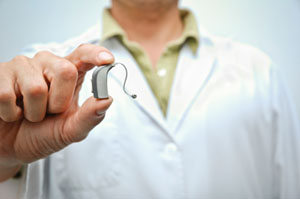Only a quarter of the 35 million U.S. adults who could benefit from hearing aids actually get them, and one of the main reasons is money. A hearing aid typically costs a few thousand dollars, sometimes much more, and most insurance plans don’t cover that. Medicare generally doesn’t pay anything, though hearing loss is a common concern among its beneficiaries. Faced with a hefty expense, many people decide that hearing what’s going on around them is a luxury they can’t afford.
In recent years, however, health-plan coverage has improved somewhat. In a national survey of people who bought hearing aids in 2008, nearly 40 percent said their health insurance paid some portion of the cost, up a few points from four years earlier. (The study was conducted by Knowles Electronics, which makes hearing-aid components.)
And a new program by insurer UnitedHealthcare aims to make affordable hearing aids available to not only its own plan members but also the general public. More on that later.
Even when it exists, insurance coverage is generally pretty skimpy. Most plans cover a hearing evaluation test. But when hearing loss is discovered, plans typically provide just $500 to $1,000 toward the cost of hearing aids once every two to five years, say experts. Hearing aids typically have to be replaced every four to six years.
The Blue Cross and Blue Shield plan for federal employees provides better coverage than many plans, although it’s still inadequate to cover all expenses. Every three years the plan pays up to $1,250 for adult hearing aids for each ear, potentially a $2,500 benefit.
Kathy Borzell started noticing as a teenager that she had trouble hearing people talk, but she was 28 before her problem was diagnosed as hearing loss and 35 before she got her first hearing aid.
Hearing loss runs in Borzell’s family: Her father and three of her four siblings have trouble hearing. But even though it wasn’t unexpected, losing her hearing was distressing.
“You want to be normal like everybody else is,” says Borzell, now 62. “Until you come to terms with it … no one wants to wear hearing aids.”
That first hearing aid Borzell got in 1985 was a basic model that cost about $1,000. (The price tag for the hearing aid typically covers the service costs to fit the device and reprogram it if necessary.) Her insurance plan covered none of it.
About five years later, Borzell, who lives in Sapphire, N.C., went back to an audiologist for another evaluation. This time she needed hearing aids in both ears. The two devices, which were more effective than her first hearing aid, cost about $5,000.
Borzell estimates that over the next two decades she bought 11 hearing aids at a cost of roughly $25,000, and “it was all out of pocket.” She buys her health insurance on the individual market.
Less Costly Option
In January, UnitedHealthcare launched a national program called “hi HealthInnovations” that promises to provide its own-brand hearing aids for $749 to $949.
The prices are 30 to 50 percent less than people would pay for comparable products elsewhere, according to Lisa Tseng, HI’s chief executive, who says the discounts are possible because the company buys in bulk.
The program is available to both the general public and UnitedHealthcare plan members, who may get an even better price. Seniors in a UnitedHealthcare Part D prescription drug plan, for example, can buy one of the program’s hearing aids for $479, says Tseng.
There are different ways to access the program. People can take a hearing test online, submit it for evaluation, then select one of the four HI hearing aids, which will be programmed to their specifications and mailed to them. They can get help with service questions online, via videos and a toll-free customer service line, or by meeting with an HI audiologist or hearing aid dispenser, located in major cities around the country.
Alternatively, customers can call HI audiologists or hearing aid dispensers (the latter are licensed professionals, but with less training than audiologists) to get tested and fitted with HI hearing aids in person for the same low price.
Whether purchased online or in person, HI hearing aids come with a 45-day money-back guarantee.
Advocacy groups say the program is too new to judge, but they hope it does all it promises.
“We think getting hearing aids into people’s hands is hugely important,” says Lise Hamlin, director of public policy for the Hearing Loss Association of America. “But the test may be wrong or the hearing aids may not work for most people. So we’re taking a wait-and-see attitude.”
The Surgical Option
For people with profound hearing loss, hearing aids may not give them the auditory boost they need. In those cases, other options could be available because health plans, including Medicare, generally cover surgery to install a small electronic device called a cochlear implant that stimulates the auditory nerve and enables some people to hear.
Kathy Borzell opted for it. In 2008, her hearing loss had progressed to the degree that hearing aids no longer enabled her to hear. At that point, her plan approved a cochlear implant in her right ear. The $5,000 deductible wasn’t insignificant, but it eliminated the need for a hearing aid in that ear forever. Last year, she got a cochlear implant in the other ear as well.
She couldn’t be more pleased. “It’s a blessing,” she says. “With cochlear implants, your hearing actually keeps getting better after surgery.”
Please send questions or ideas for future topics for the Insuring Your Health column to questions@kffhealthnews.org.
This article was produced by Kaiser Health News with support from The SCAN Foundation.








